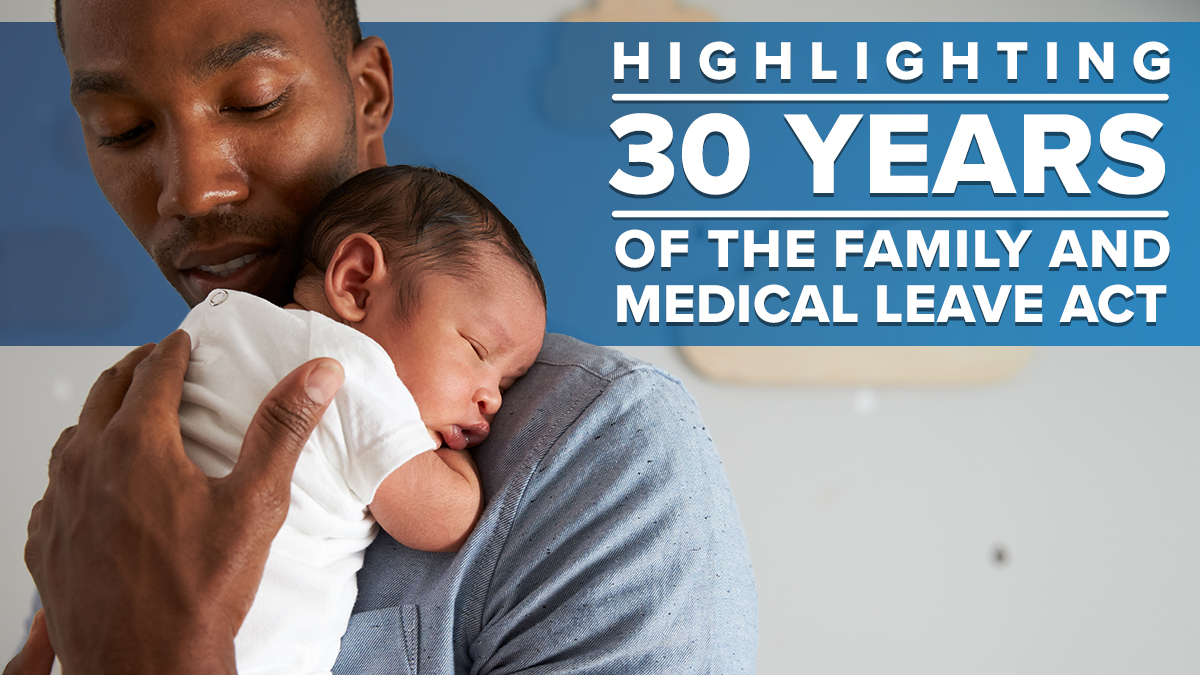 The Department of Labor's Chief Evaluation Office (CEO) highlights 30 years of the Family and Medical Leave Act (FMLA) and the growing body of evidence around employee and worksite perspectives on awareness, eligibility, and utilization of FMLA leaves. Since the signing of the law in 1993, the Department of Labor has collected four waves of survey data in 1995, 2000, 2012, and 2018 on the primary reasons workers elect to use qualifying leave, the patterns of coverage and awareness among employees, and employers’ policies and practices around FMLA leave.
The Department of Labor's Chief Evaluation Office (CEO) highlights 30 years of the Family and Medical Leave Act (FMLA) and the growing body of evidence around employee and worksite perspectives on awareness, eligibility, and utilization of FMLA leaves. Since the signing of the law in 1993, the Department of Labor has collected four waves of survey data in 1995, 2000, 2012, and 2018 on the primary reasons workers elect to use qualifying leave, the patterns of coverage and awareness among employees, and employers’ policies and practices around FMLA leave.
The 1993 Family and Medical Leave Act (FMLA) allows eligible employees who work for covered employers to take up to 12 workweeks of unpaid, job-protected leave for certain family and medical reasons.
Read the Findings
You can find multiple FMLA-related reports on the Worker Leave page on our website. Our page on the most recent 2018 surveys provides reports, videos, and other useful resources discussing survey findings of paid leave, gender differences in leave-taking and the need for leave, and leave experiences of low-wage workers.
Select Highlights
We’ve surveyed employees and employers repeatedly to understand how they experience and understand the Family and Medical Leave Act. Check out the publicly available survey data.
We used data from the 2018 FMLA Employee Survey to explore patterns of needing and taking leave from work for family or medical reasons. What we’ve learned about how men and women take leave.
The 2018 FMLA Employee Survey found that among employees who took leave, 1 in 4 used it for a new child, which includes birth, adoption or foster placement. Read more about employee leave-taking patterns.
Access the Data
Compare and leverage data for all four waves of the FMLA surveys:
The data for these surveys are publicly available for you to use in your research. Take a look at our new Data Hub for more information and details on how to access the data sets.
Check Out Our Simulation Tool and Other Resources
The Worker Paid Leave Usage Simulation (Worker PLUS) is a unique CEO project that produced an updated, open-source, publicly available simulation tool. Researchers and federal, state, and local policy makers can use the simulation tool to estimate the effects of various worker leave scenarios and policy options on worker leave-taking behavior, and to estimate the benefits paid as well as costs of administering any potential program.
Planning or conducting research? CEO has resources to help you each step of the way. On our website you will find resources including: population and topic specific information, publicly available datasets, guidance on writing reports, and guidelines and checklists to keep you on track as you navigate the research process.
